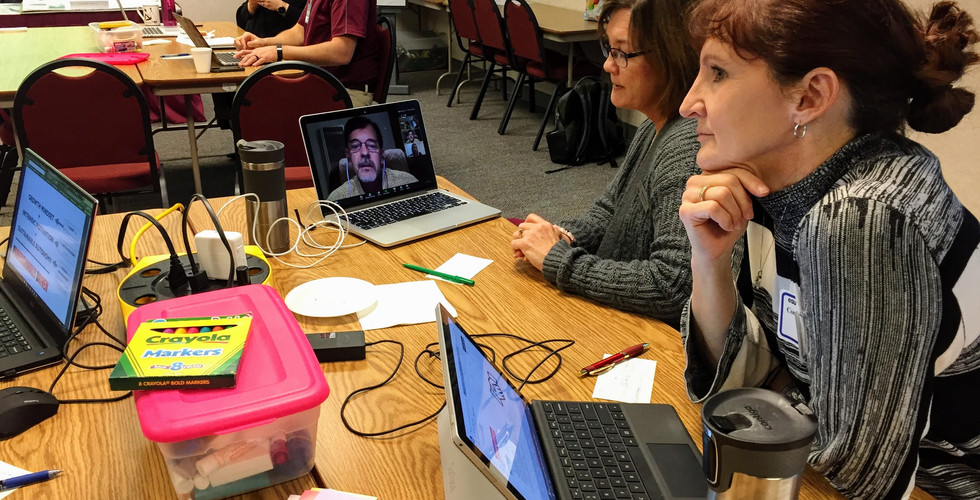The Big Three to be PD
- Jarod Bormann

- Feb 25, 2017
- 3 min read

Technology Integrationists of the Nebraska Educational Service Unit Coordinating Council conduct a fishbowl activity regarding intrinsic motivation and professional development. Even those joining virtually were participating.
This past Thursday I had the opportunity to facilitate some learning for the statewide Technology Integrationists in the state of Nebraska. The Nebraska Educational Service Unit Coordinating Council (#ESUCC) invited me in to share and learn more about Personalized PD. While the end goal was to share the model I created and use with other school districts in Iowa, the morning was more focused on one essential question: How can we empower ALL adult learners to be Professionally Driven? This question calls for us to fundamentally rethink how current forms of traditional professional development do not meet the needs of adult learners. It also required us to have some deep conversations around three big topics, that I feel, are essential to designing any kind of professional development model.
The Big Three...
In order to truly empower adult learners, the contractual professional development time should include three big ideas...

Growth Mindset
Most educators by now have at least heard the term Growth Mindset. Some have even read Carol Dweck's work: Mindsets. However, in this case, I'm not talking about simply leading a half day workshop on what is growth mindset and how does it work? I'm talking about educators actually going through the very active and arduous process of shifting towards a growth mindset or maintaining it if it's already established. This is usually done by turning instructional weaknesses into strengths. A lot of professional development time is spent looking at data. While this helps to identify weaknesses, how often are educators then given the proper time and support to figure out and work towards turning it into a strength. And while some data may reveal a district-wide weakness, does it apply to every educator?
Intrinsic Motivation
Daniel Pink's work has been around since 2009, but I still find it to be a great resource to go back to as needed. The best conversations of the day in Nebraska came from the idea of how intrinsic motivation can play a part in professional development. How is it sparked? How is it sustained? In most cases, when educators aren't motivated, various forms of "accountability" are put in place. However, if every educator in your district is intrinsically motivated to turn what they perceive are instructional weaknesses into strengths, is there a need for accountability? If the learning culture in your building focuses on punitive measures of accountability, then it's time to ask - Is our culture based on learning or compliance?
Sustainable Autonomy
Pink talks about how autonomy is a huge factor in driving intrinsic motivation. Unfortunately, most adult learning environments don't sustain it. They might allot for a day of learning in EdCamp style, but that's only one day. Some districts gamify their professional development. That might last a year or two. So when I say Sustainable Autonomy, I'm talking about autonomy that lasts from an educator's first day teaching to the day they retire. That's REAL autonomy. Not a one-time event or something that is allowed a couple times of year.
Final Thoughts...
I encourage you to take a deep look at the current professional development being offered in your district. Is it simply whole group training focused on compliance? Does your current professional development possibly include one of the Big Three: Growth Mindset, Intrinsic Motivation, and Sustainable Autonomy? If so, how might you be able to embed pieces that may be missing?
One question that I asked the group, and I will also pose to you: Of those Big Three, what order should they be established in order to have the greatest effect on adult learning? Comment with your thoughts down below.
Jarod Bormann





























Comments